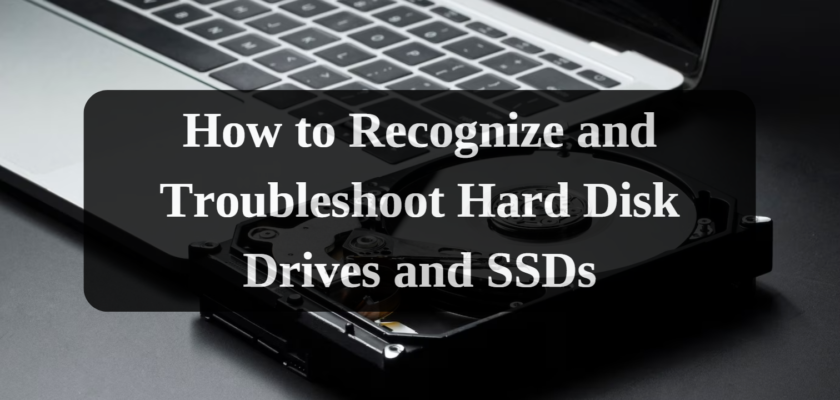Hard disk drives (HDDs) and solid-state drives (SSDs) are the two main types of storage devices used in computers. Both types of drives can experience problems, but the symptoms and troubleshooting steps may differ.
Recognizing HDD and SSD problems
Here are some common signs and symptoms of HDD and SSD problems:
- Data loss or corruption
- Slow performance
- Unexpected shutdowns or crashes
- Strange noises coming from the drive
- Error messages
If you notice any of these problems, it is important to run a diagnostic test on your drive to determine the cause. Most manufacturers offer diagnostic tools that can be downloaded and run from their websites.
Troubleshooting HDD problems
If your HDD is experiencing problems, there are a number of steps you can take to troubleshoot them:
- Check for bad sectors. Bad sectors are damaged areas of the drive that cannot be used to store data. You can use a disk utility such as CHKDSK to scan for and repair bad sectors.
- Update firmware. Firmware is the software that controls the operation of your HDD. The manufacturer may release updates to the firmware from time to time to improve performance and fix bugs. You can check for firmware updates on the manufacturer’s website.
- Defragment the drive. Defragmenting the drive rearranges the files on the disk so that they are stored in contiguous blocks. This can improve performance by reducing the amount of time the drive spends seeking for files.
- Reinstall the operating system. If the problem persists, it may be necessary to reinstall the operating system. This will erase all of the data on the drive, so it is important to back up your data before doing this.
Troubleshooting SSD problems
If your SSD is experiencing problems, there are a few things you can do to troubleshoot them:
- Update firmware. Firmware updates for SSDs are just as important as they are for HDDs. You can check for firmware updates on the manufacturer’s website.
- Run a diagnostic test. Just like HDDs, SSDs can also have bad sectors. You can use a disk utility to scan for and repair bad sectors on your SSD.
- Trim the drive. Trimming is a process that helps to improve the performance and lifespan of SSDs. You can trim your SSD using a disk utility or by using the built-in trim command in Windows or macOS.
When to seek professional help
If you are unable to resolve the problem with your HDD or SSD using the troubleshooting steps above, you may need to seek professional help. A qualified technician will be able to diagnose the problem and recommend a solution.
Additional information
In addition to the troubleshooting steps outlined in this article, there are a number of things you can do to prevent problems with your HDD or SSD:
- Regularly back up your data. This is the most important thing you can do to protect your data in case of a drive failure.
- Use a surge protector. This will help to protect your computer from power surges, which can damage your drives.
- Keep your operating system and drivers up to date. This will help to improve the performance and stability of your computer.
- Avoid overheating your computer. Overheating can damage your drives and other components. Make sure your computer is properly ventilated and that the fans are working properly.
By following these tips, you can help extend the lifespan of your HDD or SSD and prevent problems from occurring.

